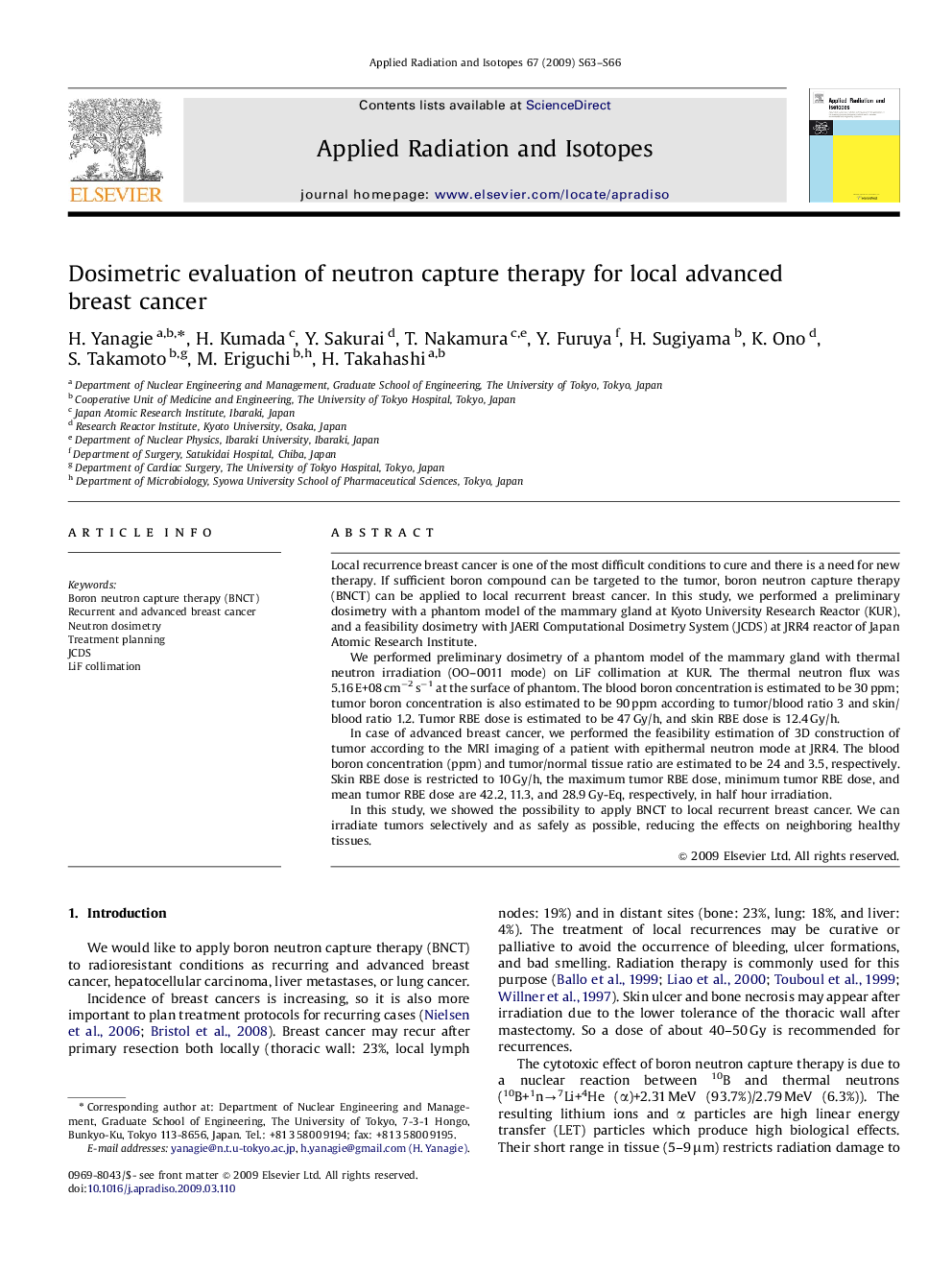| Article ID | Journal | Published Year | Pages | File Type |
|---|---|---|---|---|
| 1876888 | Applied Radiation and Isotopes | 2009 | 4 Pages |
Local recurrence breast cancer is one of the most difficult conditions to cure and there is a need for new therapy. If sufficient boron compound can be targeted to the tumor, boron neutron capture therapy (BNCT) can be applied to local recurrent breast cancer. In this study, we performed a preliminary dosimetry with a phantom model of the mammary gland at Kyoto University Research Reactor (KUR), and a feasibility dosimetry with JAERI Computational Dosimetry System (JCDS) at JRR4 reactor of Japan Atomic Research Institute.We performed preliminary dosimetry of a phantom model of the mammary gland with thermal neutron irradiation (OO–0011 mode) on LiF collimation at KUR. The thermal neutron flux was 5.16 E+08 cm−2 s−1 at the surface of phantom. The blood boron concentration is estimated to be 30 ppm; tumor boron concentration is also estimated to be 90 ppm according to tumor/blood ratio 3 and skin/blood ratio 1.2. Tumor RBE dose is estimated to be 47 Gy/h, and skin RBE dose is 12.4 Gy/h.In case of advanced breast cancer, we performed the feasibility estimation of 3D construction of tumor according to the MRI imaging of a patient with epithermal neutron mode at JRR4. The blood boron concentration (ppm) and tumor/normal tissue ratio are estimated to be 24 and 3.5, respectively. Skin RBE dose is restricted to 10 Gy/h, the maximum tumor RBE dose, minimum tumor RBE dose, and mean tumor RBE dose are 42.2, 11.3, and 28.9 Gy-Eq, respectively, in half hour irradiation.In this study, we showed the possibility to apply BNCT to local recurrent breast cancer. We can irradiate tumors selectively and as safely as possible, reducing the effects on neighboring healthy tissues.
